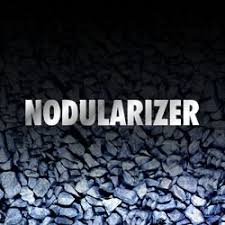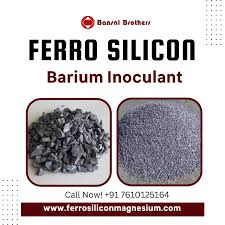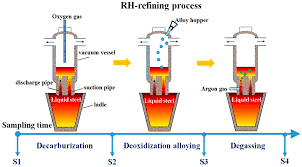A Complete Manual for Metallurgical Ferro Silicon Magnesium, Nodularizers, and Barium Inoculant
Over the years, the discipline of metallurgy — the study of metals — has undergone amazing development. The characteristics of metals have been greatly improved by the introduction of alloying elements, therefore rendering them appropriate for many uses. We will discuss in this guide the importance of Ferro Silicon Magnesium (FeSiMg), nodularizers, and barium inoculants in metallurgy along with its advantages, features, and applications.
Ferro Silicon Magnesium(FeSiMg) Definitions and Composition
Important alloying ingredient utilized in the metallurgical sector is ferro silicon magnesium (FeSiMg). Mostly iron (Fe), silicon (Si), and magnesium (Mg), it also contains various proportions of additional elements like calcium and rare earth metals. FeSiMg is essential in metal casting and manufacturing operations because of the qualities this mix of elements offers.
Manufacturing Process:
FeSiMg is produced from silica (SiO2) and magnesium oxide (MgO) reduction under iron presence. Usually occurring in electric arc furnaces, this technique heats the raw materials at high temperatures so that the silica and magnesium oxide react with iron to produce the desired alloy.
Uses in Metallurgy
Mostly utilized in the manufacturing of ductile iron, often referred to as nodular cast iron, FeSiMg is Acting as a nodularizing agent, it encourages the iron matrix’s spherical graphite nodule development. Improved mechanical qualities like more ductility and impact resistance follow from this, which qualifies ductile iron for uses including pipes, automobile components, and machinery parts.
FeSiMg: Physical Characteristics
Usually having a high melting point, great thermal conductivity, and a thick structure, FeSiMg is These features guarantee effective heat flow throughout the casting process and make it perfect for use in high-temperature applications.
Chemical Characteristics:
Magnesium causes FeSiMg to be chemically rather reactive. Although this reactivity helps graphite nodules in cast iron develop, it also calls for cautious handling and storage to avoid undesired reactions.
Mechanical Attributes
FeSiMg adds much to the mechanical qualities of cast iron. Comparatively to conventional gray cast iron, the produced ductile iron has excellent tensile strength, good elongation, and great fatigue resistance.
FeSiMg’s Use in Metallurgy: Enhancing Ductility
The capacity of FeSiMg to increase the ductility of cast iron is one of the main advantages of using it in metalworking. The spherical graphite nodules developed during the casting process stop the creation of stress concentrations, therefore enabling more easy material deformation under load.
Improving Mechanical Stability
FeSiMg helps the cast iron’s general mechanical strength as well. Stronger and more durable material results from the regular distribution of graphite nodules within the iron matrix providing further support and stopping of fracture development.
Minuting Casting Errors
FeSiMg lowers typical casting flaws like shrinkage and porosity by encouraging the development of spherical graphite nodules. Higher quality castings with less internal faults result from this, therefore improving the final goods’ dependability.
Nodularists

What are nodularisers?
To encourage the development of spherical graphite nodules, nodularizers — alloying elements — used in the manufacture of ductile iron These nodules increase the mechanical qualities of the iron, hence increasing its ductility and impact resistance.
Different kinds of nodularizers
The metallurgical sector takes use of numerous kinds of nodularizers, each with special composition and advantages.
Part in Cast Iron Making
By guaranteeing the correct development of graphite nodules, nodularizers are necessary in the manufacturing of ductile iron. Achieving the intended mechanical qualities and performance attributes in the end product depends on this procedure.
Often Used Common Nodularizers
NodularisersBased on Magnesium
Many nodularizers include magnesium because of its capacity to encourage nodule development. High-quality ductile iron is produced using extensively magnesium-based nodularisers.
Nodularisers of Rare Earth
Also employed as nodularizers are rare earth elements like cerium and lanthanum. These components serve to increase the general cast iron quality and hone the graphite structure.
Ferrosilicon Nodularisers:
Combining magnesium, silicon, and iron, ferrosilicon nodularizers Because they increase mechanical qualities and help nodule development, they are often utilized in the manufacturing of ductile iron.
Inoculant of Barium
Introduction to Inoculants: Materials added to molten metal to enhance mechanical qualities and grain structure of the resultant product One such a substance employed in the metallurgical sector is barium inoculant.

What is a barium inoculant?
Usually combining barium with silicon and other components, barium inoculant is an alloy. It helps cast iron to develop fine, uniformly dispersed graphite flakes, therefore improving its mechanical qualities.
Manufacturing Composition
The particular use determines the composition of barium inoculant, however typically it consists in a notable concentration of barium and silicon. Melting and alloying these elements produces a homogeneous material suitable for use in casting.
Physical and Chemical Attributes of Barium Inoculant
High melting point and exceptional thermal stability of barium inoculant make it suitable for use in high-temperature metallurgical operations. Chemically, it is reactive sufficient to affect the solidification process of molten iron, therefore encouraging the development of desired microstructures.
Ad advantages in metallurgical techniques
Using barium inoculant has mostly advantages in terms of improving the graphite structure in cast iron. Improved mechanical qualities like more strength, hardness, and wear resistance follow from this. Barium inoculant also helps cast iron’s chill propensity be lessened, therefore reducing the production of hard, brittle carbides.
Metallurgy’s use of barium inoculant: use in grey cast iron
Grey cast iron is produced with great usage of barium inoculant. It helps polish the graphite structure, therefore improving mechanical qualities and machinability.
Impacts on Mechanical Properties and Microstructure
Barium inoculant added to molten iron helps graphite flakes to develop fine, homogeneous distribution. This improves the cast iron’s general mechanical qualities, therefore improving its suitability for uses needing great strength and durability.
lowering chill tendency
Using barium inoculant is one of the main advantages as it helps cast iron’s cold propensity to be lowered. This helps to avoid the creation of hard carbides, therefore producing a more homogeneous and machinable material.
Comparative Study
FeSiMg vs. Nodularisers: Comparison
Although they both help to enhance cast iron’s qualities, FeSiMg and nodularisers have distinct purposes. FeSiMg is mostly utilized as a nodularizing agent; nodularizers include a wider spectrum of components used to induce nodule development.
FeSiMg Compared to Barium Inoculant
Additionally important in metallurgy are FeSiMg and barium inoculant. While barium inoculant focuses on improving the graphite structure and lowering chill tendency, FeSiMg is utilized to promote ductility and mechanical strength.
Nodularizers vs. Barium Inoculant
Although they accomplish so in various ways, nodularizers and barium inoculant both improve the qualities of cast iron. While barium inoculant polishes the graphite structure and lowers chill propensity, nodularizers help to produce spherical graphite nodules.
Guidelines for Using FeSiMg, Nodularizers, and Barium Inoculant
correct handling and storage
Unwanted reactions may be avoided and FeSiMg, nodularizers, and barium inoculant’s efficacy guaranteed by careful handling and storage. To prevent contamination, these products should be handled carefully and kept dry, cold.

Improving Alloying Techniques
Careful management of the addition of FeSiMg, nodularizers, and barium inoculant to the molten metal is part of optimizing the alloying process. This guarantees the final product has the intended characteristics.
Safety Strategies
Dealing with reactive compounds like FeSiMg and nodularizers calls for great care toward safety. Following safety procedures and wearing appropriate personal protective equipment (PPE) can help to guarantee a safe workplace and help to avoid mishaps.
Difficulties and Issues and Thoughts
Managing Reactive Products
Handling the reactivity of FeSiMg, nodularizers, and barium inoculant presents one of the primary difficulties in their use. These components should be carefully stored and handled as they may react with moisture and other chemicals.
Economic Consequences
Alloying elements such as FeSiMg and barium inoculant may have somewhat high costs. To guarantee economic sustainability, one must strike a balance between the advantages they provide and the whole cost of manufacturing.
Effects on the Environment
Alloying element manufacture and application might affect the surroundings. Following sustainable standards and reducing the environmental impact of metallurgical operations is very vital.
Metallurgy’s Future Trends
Novel ideas for alloying elements
The metallurgical sector is always changing; developments in alloying elements help to increase metal performance and qualities. Novel materials and methods are being development to improve metal properties.
Ecological Methods
In metallurgy, sustainability is starting to take front stage. Efforts are under way to lower the environmental effect of metallurgical operations and advance the use of environmentally friendly materials.
Innovations in Casting Technologies
Furthermore influencing the direction of metallurgy is developments in casting technology. New opportunities for producing intricate metal components with improved qualities are presented by technologies like additive manufacturing and 3D printing.
Finally
Ultimately, contemporary metallurgy depends critically on barium inoculants, nodularizers, and ferro silicon magnesium. They improve cast iron’s qualities, therefore rendering it appropriate for a broad spectrum of uses. Optimizing their utilization and obtaining high-quality metallurgical products depend on an awareness of their features, advantages, and best practices.


Comments
Post a Comment